Home> Company News> Mastering Hydraulic Pump Control: Tips and Techniques
- AddressToh Guan Centre, 31/F,69 Toh Guan Rd E, Singapore 608609
- Factory AddressToh Guan Centre, 31/F,69 Toh Guan Rd E, Singapore 608609
- Worktime9:00-18:00
- Phone(Working Time)0065-31591578
- Phone(Nonworking Time)0065-31591578
- Fax0065-31591339
Mastering Hydraulic Pump Control: Tips and Techniques
2023-04-25 10:03:03Hydraulic pump control is the process of managing the flow and pressure of hydraulic fluid in a hydraulic system to achieve a desired result. It involves the use of various controls, valves, and sensors to regulate the flow and pressure of the fluid.
Mastering hydraulic pump control is essential for achieving optimal performance and efficiency in hydraulic systems. It requires an understanding of the components that make up a hydraulic system, the factors that affect hydraulic pump control, and the tools and techniques for achieving accurate and consistent control.
In this guide, we will explore the fundamentals of hydraulic pump control, including its definition, importance, and the components that make up hydraulic systems. We will also provide tips and techniques for mastering hydraulic pump control, troubleshooting common issues, and maintaining and optimizing hydraulic systems. Finally, we will explore emerging trends and advancements in hydraulic pump control technology and discuss future considerations for improving and optimizing hydraulic pump control.
Understanding Hydraulic Pump Control
Hydraulic pump control plays a critical role in the operation of hydraulic systems. It involves the management of fluid flow and pressure to achieve a desired output. Understanding hydraulic pump control and its effects is essential for achieving optimal performance and efficiency in hydraulic systems.
Factors Affecting Hydraulic Pump Control
Several factors can affect hydraulic pump control, including:
-
Fluid Viscosity: The viscosity of the hydraulic fluid can affect the flow and pressure of the fluid in the system. Higher viscosity fluids may require higher pressure levels to achieve the desired output.
-
Temperature: Temperature can affect the viscosity of the hydraulic fluid and the performance of the system. High temperatures can cause the fluid to thin, reducing its ability to provide proper lubrication and protection to the system.
-
Load: The load on the hydraulic system can affect the flow and pressure of the fluid. Increased loads may require higher pressure levels to achieve the desired output.
Types of Hydraulic Pump Controls and Their Applications
There are several types of hydraulic pump controls, each with their own unique applications and benefits:
-
Manual Controls: Manual controls require the operator to adjust the flow and pressure of the hydraulic fluid manually. These controls are simple and reliable, but they may not be as precise as other types of controls.
-
Solenoid Controls: Solenoid controls use an electromagnetic coil to control the flow and pressure of the hydraulic fluid. These controls are precise and can be automated, but they may be more complex and expensive than manual controls.
-
Proportional Controls: Proportional controls adjust the flow and pressure of the hydraulic fluid proportionally to the input signal. These controls are highly precise and can provide accurate and consistent control, but they may be more complex and expensive than other types of controls.
By understanding the factors that affect hydraulic pump control and the different types of hydraulic pump controls and their applications, you can select the appropriate control system for your hydraulic system to achieve optimal performance and efficiency.
Tips and Techniques for Mastering Hydraulic Pump Control
Mastering hydraulic pump control requires a combination of knowledge, skills, and techniques. Here are some tips and techniques for mastering hydraulic pump control:
Tools and Equipment Required for Mastering Hydraulic Pump Control
To master hydraulic pump control, you will need the following tools and equipment:
-
Pressure gauge: A pressure gauge is used to measure the pressure of the hydraulic fluid in the system.
-
Flow meter: A flow meter is used to measure the flow rate of the hydraulic fluid in the system.
-
Control valve: A control valve is used to adjust the flow and pressure of the hydraulic fluid in the system.
-
Pump: A pump is used to generate the pressure needed to move the hydraulic fluid through the system.
Step-by-Step Guide on How to Master Hydraulic Pump Control
Here is a step-by-step guide on how to master hydraulic pump control:
-
Understand the Components: Understand the components that make up the hydraulic system and their functions.
-
Understand the Factors: Understand the factors that affect hydraulic pump control, such as fluid viscosity, temperature, and load.
-
Select the Right Control System: Select the appropriate hydraulic pump control system for your hydraulic system, taking into consideration the factors that affect hydraulic pump control.
-
Set Up the System: Set up the hydraulic system, including installing the pump, control valve, and pressure gauge.
-
Adjust the Pressure: Adjust the pressure of the hydraulic fluid to the desired level using the control valve and pressure gauge.
-
Monitor the Flow: Monitor the flow rate of the hydraulic fluid using the flow meter and adjust the control valve as needed to achieve the desired flow rate.
-
Observe Precautions: Observe safety precautions, such as wearing protective gear and following proper procedures for handling hydraulic fluid.
Tips and Precautions for Mastering Hydraulic Pump Control
Here are some additional tips and precautions to keep in mind when mastering hydraulic pump control:
-
Perform Regular Maintenance: Perform regular maintenance on the hydraulic system, including replacing worn or damaged components, checking fluid levels, and cleaning the system.
-
Keep Records: Keep accurate records of maintenance and repairs to track the performance of the hydraulic system and identify potential issues.
-
Observe Precautions: Observe safety precautions, such as wearing protective gear and following proper procedures for handling hydraulic fluid.
-
Consult the Manufacturer: Consult the manufacturer's instructions and recommendations for maintenance and troubleshooting.
By following these tips and techniques and observing proper precautions, you can master hydraulic pump control and achieve optimal performance and efficiency in your hydraulic system.
Troubleshooting Hydraulic Pump Control Issues
Despite proper maintenance and care, hydraulic pump control issues can still occur. Here are some common hydraulic pump control problems, how to diagnose them, and tips for resolving them:
Common Hydraulic Pump Control Problems
-
Loss of Pressure: A loss of pressure in the hydraulic system can result in reduced performance or system failure. This could be caused by leaks, worn or damaged components, or improper adjustment of the control valve.
-
Overheating: Overheating of the hydraulic system can cause damage to components and reduce the lifespan of the system. This could be caused by low fluid levels, high fluid viscosity, or a damaged cooling system.
-
Noise: Unusual noises from the hydraulic system can indicate worn or damaged components, low fluid levels, or improper fluid viscosity.
-
Slow Operation: Slow operation of the hydraulic system can be caused by worn or damaged components, low fluid levels, or improper fluid viscosity.
Diagnosing Hydraulic Pump Control Issues
Diagnosing hydraulic pump control issues involves a systematic approach to identifying the cause of the problem. Here are some steps to take when diagnosing hydraulic pump control issues:
-
Check Fluid Levels: Check the hydraulic fluid levels and top off as needed.
-
Inspect for Leaks: Inspect the system for leaks, including hoses, fittings, and connections.
-
Check Components: Check for worn or damaged components, such as valves, pumps, and cylinders.
-
Monitor Pressure: Monitor the pressure of the hydraulic fluid and adjust the control valve as needed.
Resolving Hydraulic Pump Control Issues
Here are some tips for resolving common hydraulic pump control issues:
-
Loss of Pressure: Address any leaks, replace worn or damaged components, and adjust the control valve as needed to restore proper pressure levels.
-
Overheating: Check and replace any damaged cooling system components, replace or top off fluid as needed, and ensure that the fluid viscosity is within the recommended range.
-
Noise: Replace any worn or damaged components, adjust the fluid level and viscosity as needed, and ensure that the system is operating at the correct pressure levels.
-
Slow Operation: Replace any worn or damaged components, check and adjust fluid levels and viscosity as needed, and ensure that the system is operating at the correct pressure levels.
By following these troubleshooting tips and performing regular maintenance and inspections, you can ensure that your hydraulic pump control system operates at peak efficiency and minimize the risk of breakdowns and downtime.
Maintenance and Upkeep
Regular maintenance and upkeep are essential for maintaining optimal hydraulic pump control performance and prolonging the lifespan of the system. Here are some important considerations for maintaining and optimizing your hydraulic pump control system:
Importance of Regular Maintenance for Hydraulic Pump Control
Regular maintenance is critical for identifying potential issues before they become major problems and prolonging the lifespan of the hydraulic pump control system. It involves performing regular inspections, cleaning the system, replacing worn or damaged components, and ensuring that the system is operating at optimal performance.
Recommended Maintenance Schedule for Hydraulic Pump Controls
The recommended maintenance schedule for hydraulic pump controls can vary depending on the manufacturer's recommendations and the specific application of the system. However, here are some general guidelines:
-
Daily: Check fluid levels and inspect for leaks.
-
Weekly: Clean the system and check for signs of wear or damage.
-
Monthly: Perform more detailed inspections and check the system for proper pressure and flow rates.
-
Annually: Replace any worn or damaged components and perform more extensive maintenance and repairs as needed.
Tips for Ensuring Optimal Hydraulic Pump Control Performance
Here are some tips for ensuring optimal hydraulic pump control performance:
-
Use the Right Fluid: Use the recommended hydraulic fluid for your specific system to ensure optimal performance and minimize the risk of breakdowns.
-
Change Filters Regularly: Regularly change the filters in the system to ensure that the fluid remains clean and free from contaminants.
-
Monitor Temperature: Monitor the temperature of the hydraulic fluid and ensure that it remains within the recommended range to prevent damage to the system.
-
Train Operators: Ensure that operators are properly trained in the operation and maintenance of the hydraulic pump control system to minimize the risk of damage or failure.
By following these maintenance and upkeep tips, you can ensure that your hydraulic pump control system operates at peak efficiency and prolong the lifespan of the system. Remember, regular maintenance and inspections can help identify potential issues before they become major problems, minimizing the risk of downtime and costly repairs.
Best Practices
Achieving accurate and consistent hydraulic pump control requires a combination of knowledge, skills, and best practices. Here are some best practices for achieving optimal hydraulic pump control performance:
Tips and Best Practices for Achieving Accurate and Consistent Hydraulic Pump Control
-
Maintain the System: Regularly maintain the hydraulic pump control system to prevent breakdowns and ensure optimal performance.
-
Monitor Fluid Levels: Monitor the fluid levels in the system to ensure that they remain within the recommended range.
-
Monitor Pressure: Monitor the pressure of the hydraulic fluid and adjust the control valve as needed to maintain the desired pressure level.
-
Monitor Flow Rate: Monitor the flow rate of the hydraulic fluid and adjust the control valve as needed to maintain the desired flow rate.
-
Train Operators: Ensure that operators are properly trained in the operation and maintenance of the hydraulic pump control system to minimize the risk of damage or failure.
-
Keep Records: Keep accurate records of maintenance and repairs to track the performance of the hydraulic system and identify potential issues.
-
Follow Manufacturer's Recommendations: Follow the manufacturer's instructions and recommendations for maintenance and troubleshooting.
Importance of Following Manufacturer's Instructions and Recommendations
Following the manufacturer's instructions and recommendations is critical for achieving optimal hydraulic pump control performance. This includes using the recommended hydraulic fluid, filters, and components, and following the recommended maintenance schedule.
Case Studies and Examples of Successful Hydraulic Pump Control Mastery
Here are some examples of successful hydraulic pump control mastery:
-
In a manufacturing facility, a hydraulic pump control system was causing frequent breakdowns and production delays. After conducting a thorough inspection and maintenance program, the system was optimized for performance and downtime was reduced significantly.
-
A construction company was struggling to achieve consistent output from its hydraulic system, leading to delays and increased costs. After implementing a training program for operators and performing regular maintenance, the hydraulic system was optimized for performance and productivity was significantly increased.
By following these best practices and observing proper precautions, you can achieve accurate and consistent hydraulic pump control performance and prolong the lifespan of your hydraulic system.
Emerging Trends and Advancements
Hydraulic pump control technology is continually evolving, with new advancements and trends emerging. Here are some emerging trends and advancements in hydraulic pump control technology:
Emerging Trends and Advancements in Hydraulic Pump Control Technology
-
Smart Control Systems: Smart control systems use sensors and data analytics to optimize hydraulic pump control performance, reducing downtime and maximizing efficiency.
-
Variable Speed Pumps: Variable speed pumps adjust the speed of the hydraulic pump to match the demand of the system, reducing energy consumption and improving efficiency.
-
Remote Monitoring: Remote monitoring allows operators to monitor the performance of the hydraulic system from a remote location, enabling quicker response times to potential issues and reducing downtime.
-
Predictive Maintenance: Predictive maintenance uses data analytics to predict potential issues before they occur, enabling operators to perform maintenance and repairs before a breakdown occurs.
Potential Future Developments and Improvements for Hydraulic Pump Control
Here are some potential future developments and improvements for hydraulic pump control technology:
-
Hybrid Control Systems: Hybrid control systems combine hydraulic and electric control systems to maximize efficiency and reduce energy consumption.
-
Artificial Intelligence: Artificial intelligence could be used to optimize hydraulic pump control performance, predicting potential issues and optimizing the system for maximum efficiency.
-
Advanced Sensors: Advanced sensors could be used to detect potential issues before they occur, enabling quicker response times and reducing downtime.
-
Eco-Friendly Hydraulic Fluids: Eco-friendly hydraulic fluids could be developed, reducing the environmental impact of hydraulic pump control systems.
Importance of Staying Up-to-Date with Hydraulic Pump Control Advancements
Staying up-to-date with hydraulic pump control advancements is critical for achieving optimal performance and efficiency in your hydraulic system. By staying informed of emerging trends and advancements, you can make informed decisions about upgrading and optimizing your hydraulic pump control system.
By keeping an eye on emerging trends and advancements, you can stay ahead of the curve and make informed decisions about upgrading and optimizing your hydraulic pump control system to achieve optimal performance and efficiency.
Conclusion
Mastering hydraulic pump control is essential for achieving optimal performance and efficiency in hydraulic systems. By understanding the components of hydraulic pump control systems, the factors that affect their performance, and best practices for maintenance and operation, you can achieve accurate and consistent hydraulic pump control performance and prolong the lifespan of your hydraulic system.
Regular maintenance and inspections are critical for identifying potential issues before they become major problems and ensuring optimal performance. Following manufacturer's instructions and recommendations, using the right fluids and filters, and training operators are all important considerations for achieving optimal hydraulic pump control performance.
Staying up-to-date with emerging trends and advancements in hydraulic pump control technology is also critical for achieving optimal performance and efficiency in your hydraulic system. By staying informed of emerging trends and advancements, you can make informed decisions about upgrading and optimizing your hydraulic pump control system to achieve optimal performance and efficiency.
In summary, by mastering hydraulic pump control, performing regular maintenance and inspections, and staying up-to-date with emerging trends and advancements, you can achieve accurate and consistent hydraulic pump control performance, reduce downtime, and prolong the lifespan of your hydraulic system.
Mud pump bearings Turntable bearings Agricultural bearings Angular Contact Bearings Duplex Angular Contact Bearings Industrial bearings Iron and steel industry bearings Power transmission bearing Hydrostatic centripetal bearing Ball Thrust Bearings Papermaking Machinery bearings Agricultural machinery bearing McGILL bearing Rexroth pump assay Komatsu motor parts BOSCH Fuel injector Hitachi excavator parts Axial Piston Pumps Sauer Danfoss pump Eaton pump parts Nachi pump assay Linde pump Mining Construction Ball Bearings Linear Bearings vane pumps gear pumps inc piston pumps Thin-Section Ball Bearings Adapter Sleeves pressure valves gear reducer relief valves Mcgill Bearing Die & Mold Plain-Bearing Bushings FAG Bearing Singapore SKF bearing Accessories SKF bearing Housing SKF bearing shaft seals SKF Bearing units Bearing Distributors Inventory Oilfield mud pump bearings Heavy-Duty Shaker Screen Spherical Double row double row tapered roller bearings (inch series) Multi-Row Roller Bearings NTN Four Row Cylindrical Roller Bearings NTN SL Type Cylindrical Roller Bearings NTN SL Type Cylindrical Roller Bearings for Sheaves NTN Single Row Tapered Roller Bearings NTN Double Row Tapered Roller Bearings NTN Four Row Tapered Roller Bearings NTN Spherical Roller Bearings NTN Thrust Bearings NTN Bearings for special applications NTN DOUBLE-ROW CYLINDRICAL ROLLER BEARINGS NSK FULL-COMPLEMENT CYLINDRICAL ROLLER BEARINGS NSK SINGLE-ROW TAPERED ROLLER BEARINGS NSK YUKEN Piston pump DOUBLE-ROW TAPERED ROLLER BEARINGS NSK SPHERICAL ROLLER BEARINGS NSK SINGLE-DIRECTION THRUST BALL BEARINGS NSK CYLINDRICAL ROLLER THRUST BEARINGS NSK TAPERED ROLLER THRUST BEARINGS NSK SPHERICAL THRUST ROLLER BEARINGS NSK ROLLING BEARINGS FOR STEEL MILLS NSK SEALED-CLEAN FOUR-ROW TAPERED ROLLER BEARINGS NSK FOUR-ROW CYLINDRICAL ROLLER BEARINGS NSK DOUBLE-ROW TAPERED ROLLER BEARINGS NSK Roll Bearings for Mills NSK Ball Bearings NSK TAPERED ROLLER THRUST BEARINGS For Adjusting Screws NSK Thin Section Bearings Kaydon Double row double row tapered roller bearings (inch series) Double direction thrust tapered roller bearings Full complement Tapered roller Thrust bearing Thrust cylindrical roller bearings Thrust spherical roller bearings Sealed Four Row Tapered Roller Bearings Four row tapered roller bearings Double outer double row tapered roller bearings TDO double-row tapered roller bearings Single row tapered roller bearings inch Double inner double row tapered roller bearings TDI Double inner double row tapered roller bearings inch Spherical roller bearing Four row cylindrical roller bearings Single row cylindrical roller bearings Full row of cylindrical roller bearings Double row cylindrical roller bearings Double row full complement cylindrical roller bearings Four point contact ball bearings Double row angular contact ball bearings Deep groove ball bearings ANGULAR CONTACT THRUST BALL BEARINGS TYPE TVL DTVL angular contact thrust ball bearing. TP thrust cylindrical roller bearing TPS thrust cylindrical roller bearing THRUST SPHERICAL ROLLER BEARINGS TYPES TSR-EJ AND TSR-EM TTHD THRUST TAPERED ROLLER BEARINGS TTHDFL thrust tapered roller bearing TTHDFLSA THRUST TAPERED ROLLER BEARINGS THRUST TAPERED ROLLER BEARINGS TYPES TTSP, TTSPS AND TTSPL THRUST TAPERED ROLLER BEARINGS – TYPES TTC, TTCS AND TTCL SCREWDOWN BEARINGS – TYPES TTHDSX/SV AND TTHDFLSX/SV THRUST TAPERED ROLLER BEARING TYPES TTDWK AND TTDFLK CROSSED ROLLER BEARINGS TXR Tapered Roller bearings double-row • Type TDO Tapered Roller bearings double-row TDI TDIT Tapered Roller Bearings double-row TNA Tapered Roller Bearings double-row TNASWE Tapered Roller Bearings double-row Spacer assemblies TTVS TTSP TTC TTCS TTCL tapered roller thrust BEARINGS Heavy-Duty Shaker Screen Spherical Roller Bearings Timken SPHERICAL ROLLER BEARINGS CYLINDRICAL ROLLER BEARINGS ONE-ROW METRIC ISO SERIES CYLINDRICAL ROLLER BEARINGS one-row STANDARD SERIES CYLINDRICAL ROLLER BEARINGS FULL-COMPLEMENT NCF CYLINDRICAL ROLLER BEARINGS TWO-Row Four-Row Cylindrical Roller Bearings CYLINDRICAL ROLLER BEARINGS HJ SERIES CYLINDRICAL ROLLER BEARINGS 5200 A5200 metric series HeavY-duty needle roller bearings four-row cylindrical roller Bearing assembly four-row cylindrical roller Bearing inner ring Outer assembly four-row tapered roller Bearings • tQow – 2tdiw Timken Sealed roll neck Bearings four-row tapErEd rollEr BEaringS tQitS TnasWH TWo-roW TaPered roller bearings TdiT TnaT two-row tapErEd rollEr BEaringS tdik THrusT TaPered roller bearings TTdFlk, TTdW and TTdk bearings screwdown systems thrust tapered rollEr Bearings Thrust spherical roller bearing Mud pump bearings TOKYO-KEIKI piston pump TOKYO-KEIKI vane pump DAIKIN piston pump DAIKIN vane pump DAIKIN Rotor pump VICKERS Piston pump Vickers vane pump VICKERS gear pump NACHI gear pump NACHI piston pump Rexroth A1VO Rexroth A10VSO Rexroth AA4VSO Rexroth A15VSO Rexroth AZPF parker PV piston pump parker PVP piston pump parker PAVC piston pump parker vane pump Multi-Row Roller Bearings NTN Four Row Cylindrical Roller Bearings NTN SL Type Cylindrical Roller Bearings NTN SL Type Cylindrical Roller Bearings for Sheaves NTN Single Row Tapered Roller Bearings NTN Double Row Tapered Roller Bearings NTN Four Row Tapered Roller Bearings NTN Spherical Roller Bearings NTN Thrust Bearings NTN Bearings for special applications NTN DOUBLE-ROW CYLINDRICAL ROLLER BEARINGS NSK FULL-COMPLEMENT CYLINDRICAL ROLLER BEARINGS NSK SINGLE-ROW TAPERED ROLLER BEARINGS NSK YUKEN Piston pump DOUBLE-ROW TAPERED ROLLER BEARINGS NSK SPHERICAL ROLLER BEARINGS NSK SINGLE-DIRECTION THRUST BALL BEARINGS NSK CYLINDRICAL ROLLER THRUST BEARINGS NSK TAPERED ROLLER THRUST BEARINGS NSK SPHERICAL THRUST ROLLER BEARINGS NSK ROLLING BEARINGS FOR STEEL MILLS NSK SEALED-CLEAN FOUR-ROW TAPERED ROLLER BEARINGS NSK FOUR-ROW CYLINDRICAL ROLLER BEARINGS NSK DOUBLE-ROW TAPERED ROLLER BEARINGS NSK Roll Bearings for Mills NSK CROSSED-ROLLER BEARINGS NSK Ball Bearings NSK TAPERED ROLLER THRUST BEARINGS For Adjusting Screws NSK Roller Bearings NSK Thin Section Bearings Kaydon Double row double row tapered roller bearings (inch series) Double direction thrust tapered roller bearings Full complement Tapered roller Thrust bearing Thrust cylindrical roller bearings Thrust spherical roller bearings Sealed Four Row Tapered Roller Bearings Four row tapered roller bearings Double outer double row tapered roller bearings TDO double-row tapered roller bearings Single row tapered roller bearings inch Double inner double row tapered roller bearings TDI Single row tapered roller bearings Double inner double row tapered roller bearings inch Split spherical roller bearings Spherical roller bearing Four row cylindrical roller bearings Single row cylindrical roller bearings Full row of cylindrical roller bearings Double row cylindrical roller bearings Double row full complement cylindrical roller bearings Four point contact ball bearings Double row angular contact ball bearings Deep groove ball bearings ANGULAR CONTACT THRUST BALL BEARINGS TYPE TVL DTVL angular contact thrust ball bearing. TP thrust cylindrical roller bearing TPS thrust cylindrical roller bearing THRUST SPHERICAL ROLLER BEARINGS TYPES TSR-EJ AND TSR-EM TTHD THRUST TAPERED ROLLER BEARINGS TTHDFL thrust tapered roller bearing TTHDFLSA THRUST TAPERED ROLLER BEARINGS THRUST TAPERED ROLLER BEARINGS TYPES TTSP, TTSPS AND TTSPL THRUST TAPERED ROLLER BEARINGS – TYPES TTC, TTCS AND TTCL SCREWDOWN BEARINGS – TYPES TTHDSX/SV AND TTHDFLSX/SV THRUST TAPERED ROLLER BEARING TYPES TTDWK AND TTDFLK CROSSED ROLLER BEARINGS TXR Tapered Roller bearings double-row • Type TDO Tapered Roller bearings double-row TDI TDIT Tapered Roller Bearings double-row Spacer assemblies TTVS TTSP TTC TTCS TTCL tapered roller thrust BEARINGS Heavy-Duty Shaker Screen Spherical Roller Bearings Timken SPHERICAL ROLLER BEARINGS CYLINDRICAL ROLLER BEARINGS ONE-ROW METRIC ISO SERIES CYLINDRICAL ROLLER BEARINGS one-row STANDARD SERIES CYLINDRICAL ROLLER BEARINGS FULL-COMPLEMENT NCF CYLINDRICAL ROLLER BEARINGS TWO-Row Four-Row Cylindrical Roller Bearings CYLINDRICAL ROLLER BEARINGS HJ SERIES CYLINDRICAL ROLLER BEARINGS 5200 A5200 metric series HeavY-duty needle roller bearings four-row cylindrical roller Bearing assembly four-row cylindrical roller Bearing inner ring Outer assembly Timken Sealed roll neck Bearings four-row tapErEd rollEr BEaringS tQitS TnasWH TWo-roW TaPered roller bearings TdiT TnaT two-row tapErEd rollEr BEaringS tdik THrusT TaPered roller bearings TTdFlk, TTdW and TTdk bearings screwdown systems thrust tapered rollEr Bearings Thrust spherical roller bearing Mud pump bearings TOKYO-KEIKI piston pump TOKYO-KEIKI vane pump YUKEN vane pump DAIKIN piston pump DAIKIN vane pump DAIKIN Rotor pump VICKERS Piston pump Vickers vane pump VICKERS gear pump NACHI gear pump NACHI piston pump Rexroth A1VO Rexroth A10VSO Rexroth AA4VSO Rexroth A15VSO Rexroth AZPF parker PV piston pump parker PVP piston pump parker PAVC piston pump Main pump

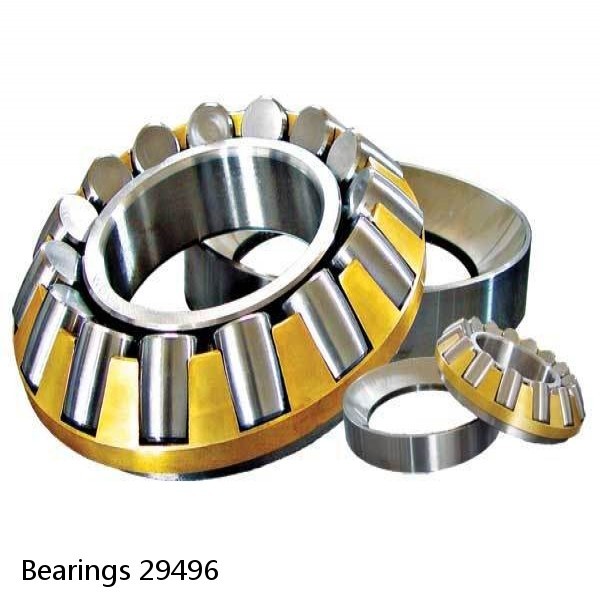 Bearings 29496
Bearings 29496 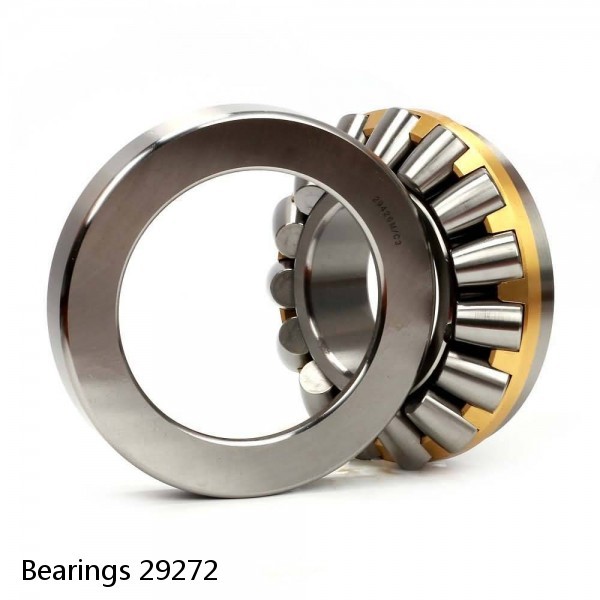 Bearings 29272
Bearings 29272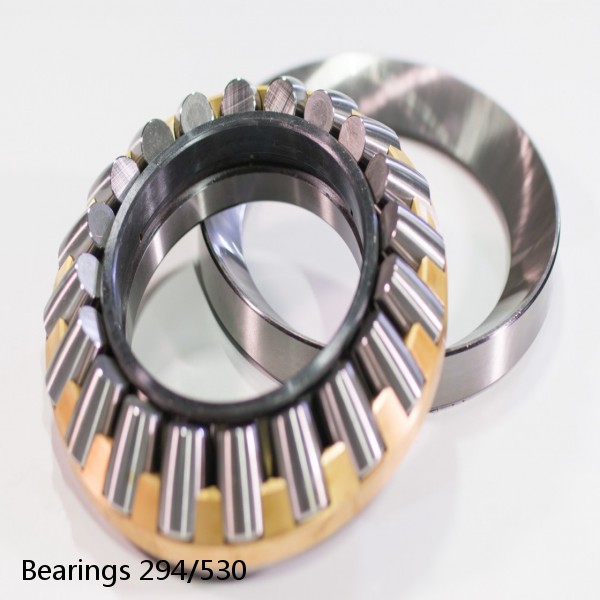 Bearings 294/530
Bearings 294/530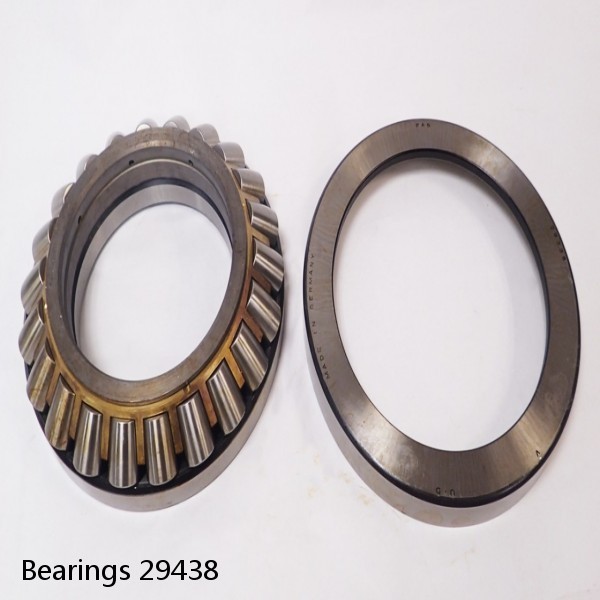 Bearings 29438
Bearings 29438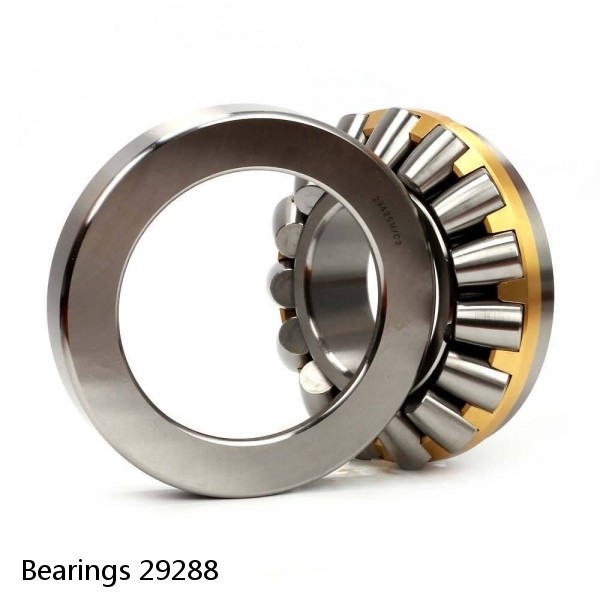 Bearings 29288
Bearings 29288